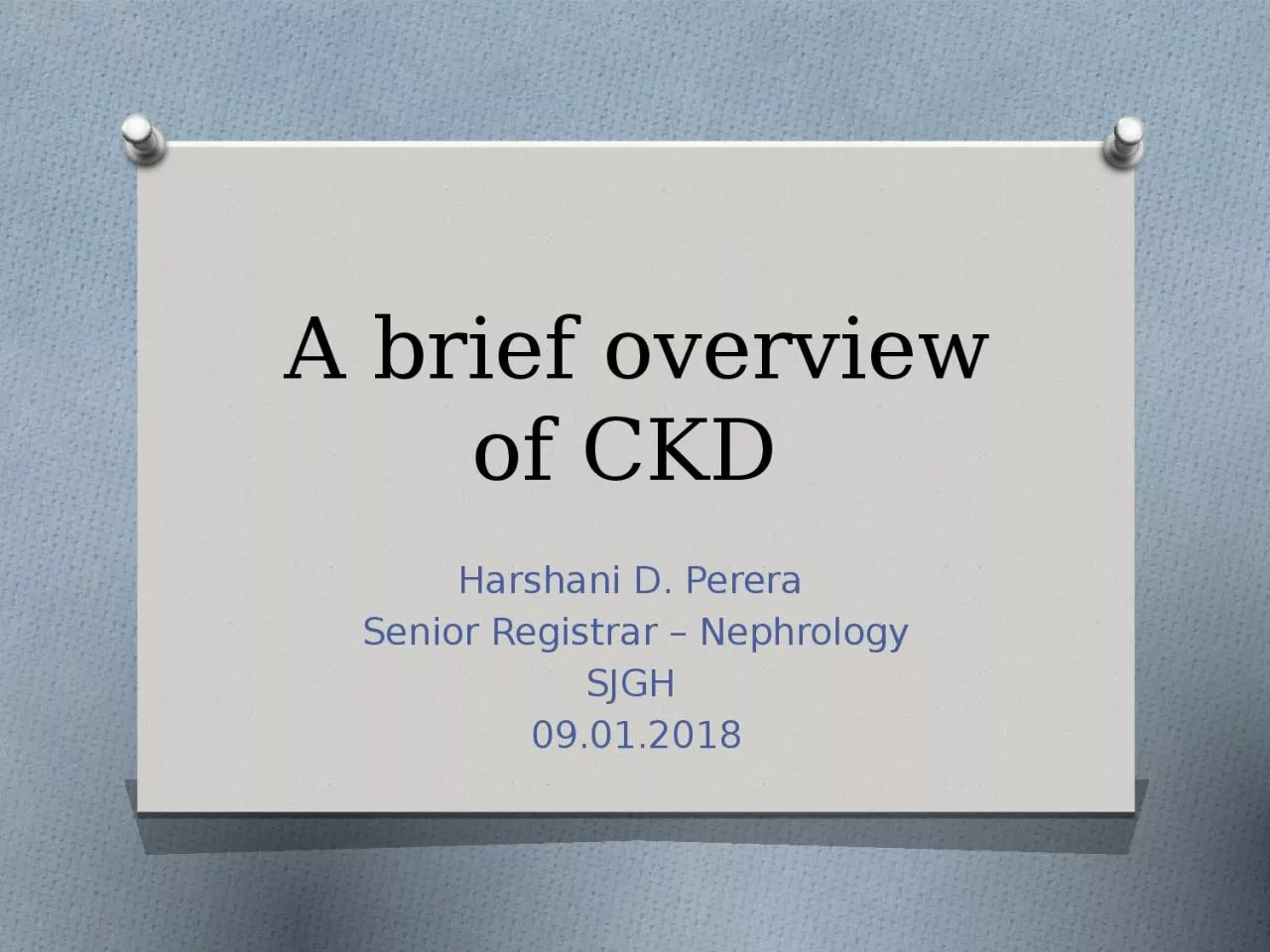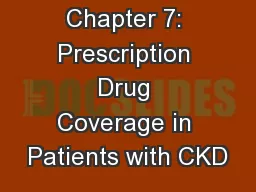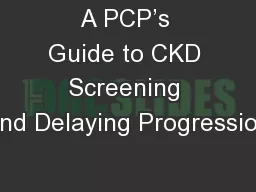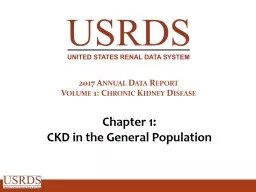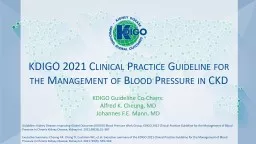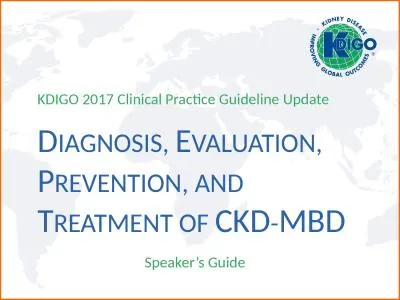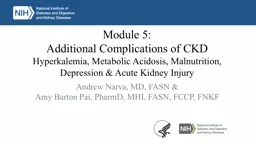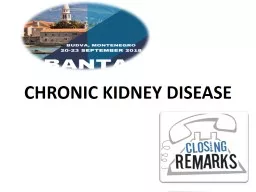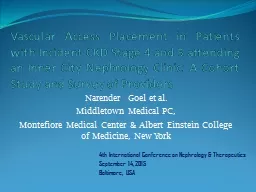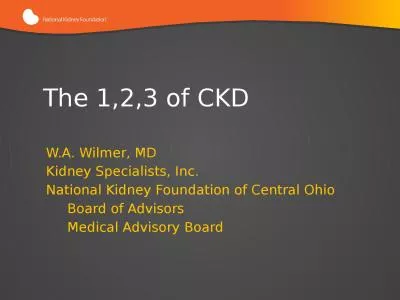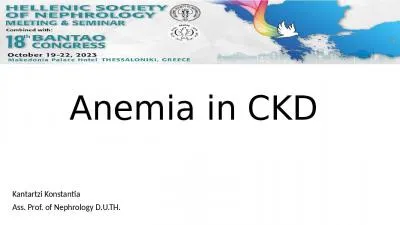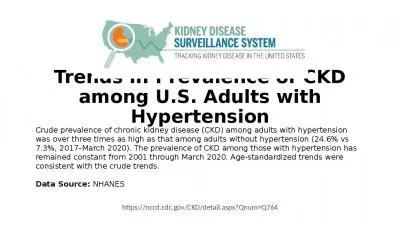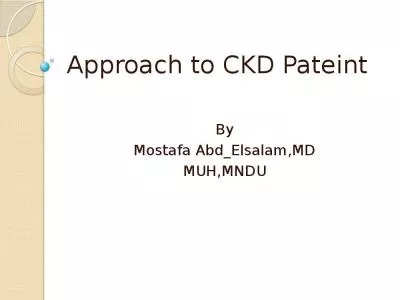PPT-A brief overview of CKD
Author : sadie | Published Date : 2023-11-21
Harshani D Perera Senior Registrar Nephrology SJGH 09012018 CKD definition Kidney damage or eGFR lt 60 mlmin173m2 persisting for 3 months despite the cause
Presentation Embed Code
Download Presentation
Download Presentation The PPT/PDF document "A brief overview of CKD" is the property of its rightful owner. Permission is granted to download and print the materials on this website for personal, non-commercial use only, and to display it on your personal computer provided you do not modify the materials and that you retain all copyright notices contained in the materials. By downloading content from our website, you accept the terms of this agreement.
A brief overview of CKD: Transcript
Download Rules Of Document
"A brief overview of CKD"The content belongs to its owner. You may download and print it for personal use, without modification, and keep all copyright notices. By downloading, you agree to these terms.
Related Documents

